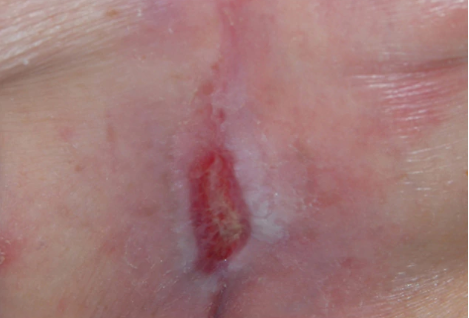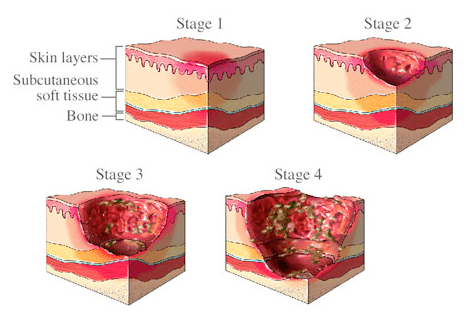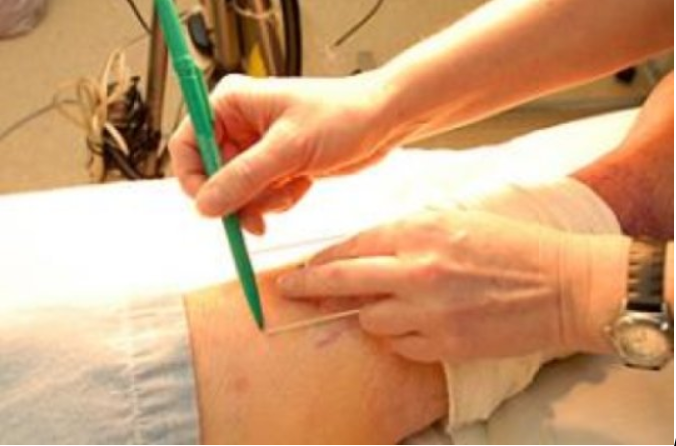The Problem
Pressure Ulcers
What are Pressure Ulcers?
Bedsores, also known as pressure ulcers, are injuries to the skin and underlying tissue resulting from prolonged pressure on the skin that limits blood flow to the skin. The pressure results usually from areas of the skin that covers bone that is subjected to constant pressure such as the hips, back, buttocks and other extremities. The constant pressure results in ischemia, inadequate blood flood, which leads to skin cell death and deep tissue necrosis. A main cause of of pressure ulcers is the impaired mobility of a patient, ultimately leading to the development and formation of bed sores.

Source: {Mayo Clinic}
Complications Resulting From Pressure Ulcers
The signs and symptoms of pressure ulcers vary with the stage or condition of the skin. There are four categories of pressure ulcers that increase with the severity of the injury: stage I, stage II, stage III, and stage IV. Pressure ulcers can lead to pain, disfigurement, infection and death.

Source: {Healthwise, Inc.}
Clinical Unmet Need
Diagnosis has relied on visual inspection by clinicians, which is subjective and which can only identify pressure ulcers once the wound is visible, meaning the upper layer of the skin has been broken. Scientific research has shown that by the time damage is visible, is it too late. Though research is being conducted on potential therapies to offset the damage, these wounds often become chronic, costing the health care industry and its patients millions every year.

Source: {ScienceDaily.com}
